Popular Turkish Delight
Are you planning to embark on a mouth-watering adventure in Turkey? Look no further than the delicious Turkish delight with its vibrant colors and unique flavors ranging from classic rose to exotic chili pepper.
Turkish delight, also known as lokum, is a sweet confection that has captured people's hearts and taste buds worldwide. It is delicious and holds a special significance in Turkish culture, often serving as a symbol of hospitality. And with modern twists like alcohol-infused or sea salt and black truffle flavors, there's always something new to discover.
Lokum, the Most Popular Turkish Delight
In this blog, we'll explore the history of Turkish delight, its ingredients, recipe, various flavors, and cultural significance. So whether you're a first-time taster or a long-time lover of Turkish delight, get ready to indulge in a sweet and exciting journey!
Origins of Turkish Delight
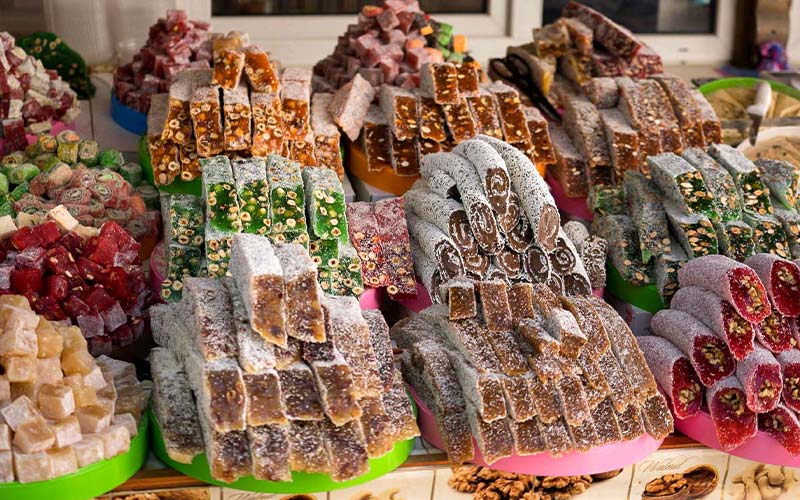
The origin of Turkish delight can be traced back to the Ottoman Empire, which spanned from the 14th to the early 20th century. Turkish delight's exact origin is unknown, but it is believed to be created by a palace confectioner named Bekir Effendi in the early 19th century. He developed a recipe for a sweet, jelly-like candy made from sugar, cornstarch, and flavorings, which was then dusted with powdered sugar or coconut.
Initially, Turkish delight was only consumed by the upper classes and was considered a luxury item. However, as production methods improved, they became more widely available and popular among all social classes in Turkey. In the late 1800s, Turkish delight was introduced to Europe, where it gained popularity as a sweet treat.
Today, Turkish delight is enjoyed worldwide and has become an iconic symbol of Turkish culture. It is often given as a gift and a sign of hospitality. With its rich history and delicious taste, Turkish delight continues to delight people of all ages and backgrounds.
Turkish Delight Recipe
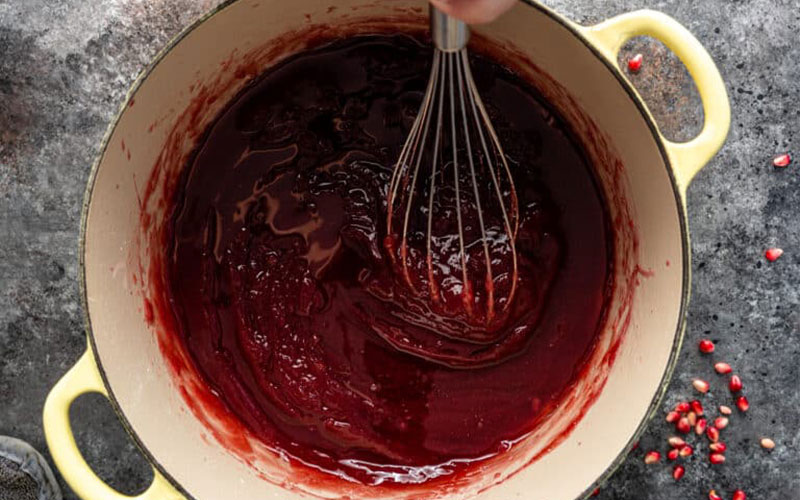
If you want to impress your friends and family with your culinary skills, look no further than this delicious and fun Turkish delight recipe! You can create sweet and delightful candy with just a few ingredients and patience.
Here's everything you'll need to make your batch of Turkish delight:
Ingredients:
- 2 cups granulated sugar
- 1 cup cornstarch
- 1 and 1/2 cups water
- 2 tbsp lemon juice
- 1 tsp rosewater (optional)
- Food coloring (optional)
- Powdered sugar for dusting
Instructions:
1. Combine the sugar, cornstarch, and water in a large pot. Stir together until well combined, then place the pot over medium heat.
2. Cook the mixture, stirring constantly, until it boils. Reduce the heat to low and stir for 20-30 minutes or until the mixture becomes thick and glossy.
3. Remove the pot from the heat and stir in the lemon juice and rosewater (if using). If you'd like to add food coloring, now is the time.
4. You can also experiment with different flavors and color combinations if you're adventurous. Try using orange blossom water instead of rosewater, or add a few drops of red food coloring for bright pink candy. The possibilities are endless!
5. Pour the mixture into a greased 8x8-inch baking dish and smooth the top with a spatula. Allow the candy to cool and set for several hours or overnight.
6. Once the candy has been set, cut it into small squares with a sharp knife. Dust the squares with powdered sugar to prevent them from sticking together.
7. And that's it - your homemade Turkish delight is ready to serve!
So why grab your apron and try this fun and delicious Turkish delight recipe? With its sweet, delicate flavor and beautiful appearance, it's sure to become a new favorite in your household. Happy cooking!
Varieties of Turkish Delight
Turkish delight comes in a wide variety of flavors and textures. Here are some of the most popular types of Turkish delight:
- Rose:
The classic flavor of Turkish delight, rose has a delicate floral taste and aroma.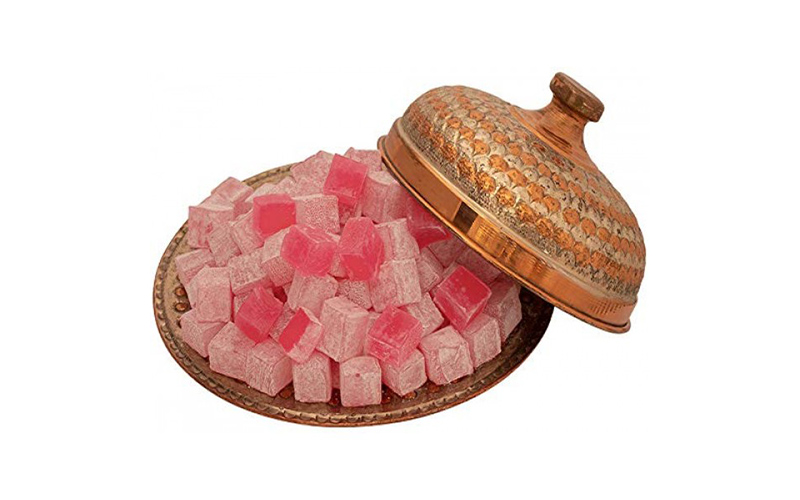
- Lemon:
Refreshing and tangy, lemon Turkish delight is a popular choice for those who prefer a citrusy flavor.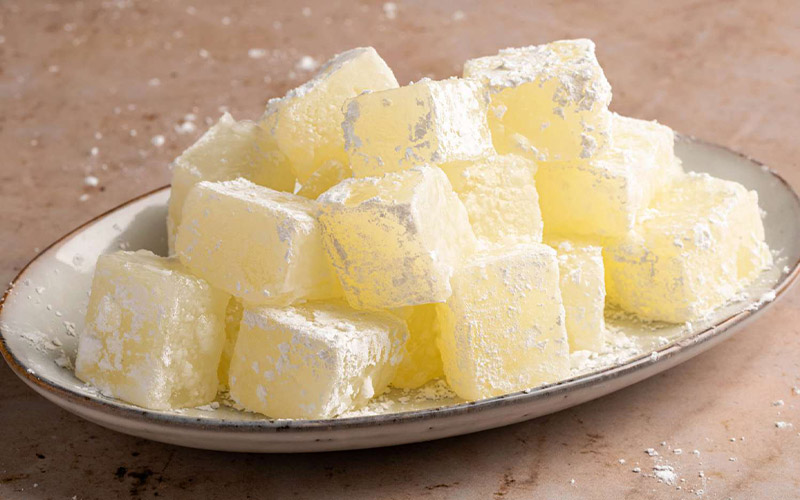
- Pistachio:
With its crunchy pistachio pieces, this Turkish delight variety offers a nice contrast in texture to the soft and chewy candy.
- Pomegranate:
This fruity flavor is a newer addition to the Turkish delight family, and it's become increasingly popular in recent years.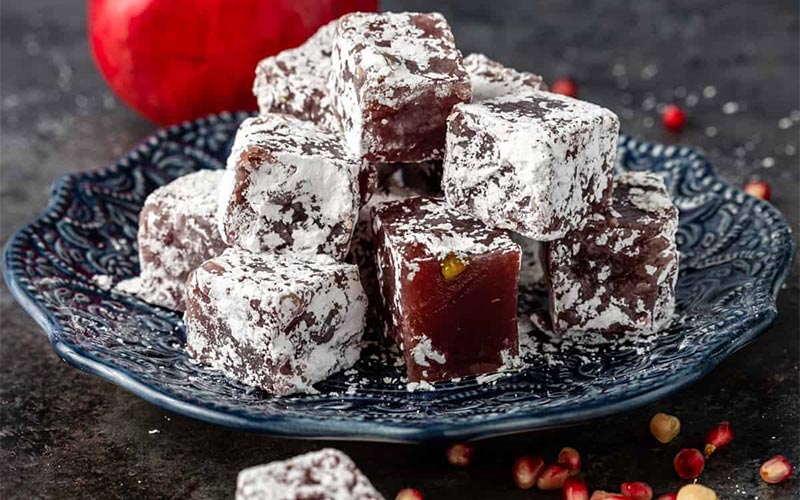
- Mint:
Refreshing and invigorating, mint-flavored Turkish delight is popular for after-dinner treats.
- Hazelnut:
This variety has a rich and nutty flavor, with small pieces of hazelnut mixed in for added texture.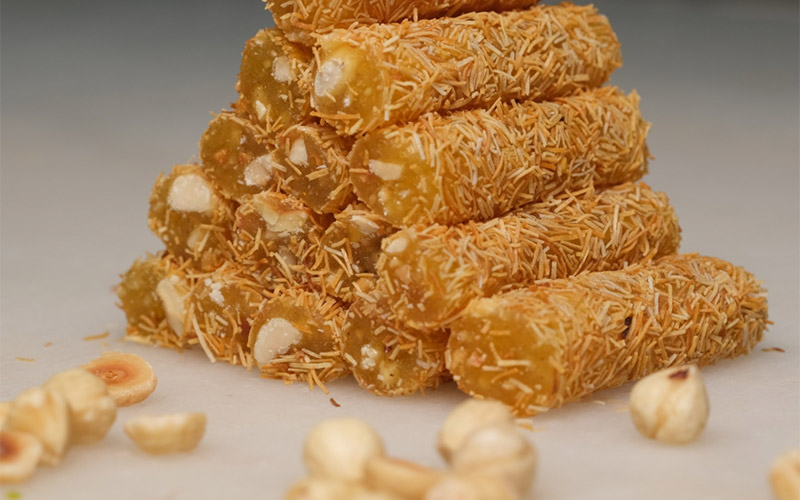
- Bergamot:
Bergamot is a citrus fruit with a unique floral and spicy flavor, and its flavor is used in some varieties of Turkish delight.
- Cocoa:
For chocolate lovers, cocoa-flavored Turkish delight offers a rich and decadent taste.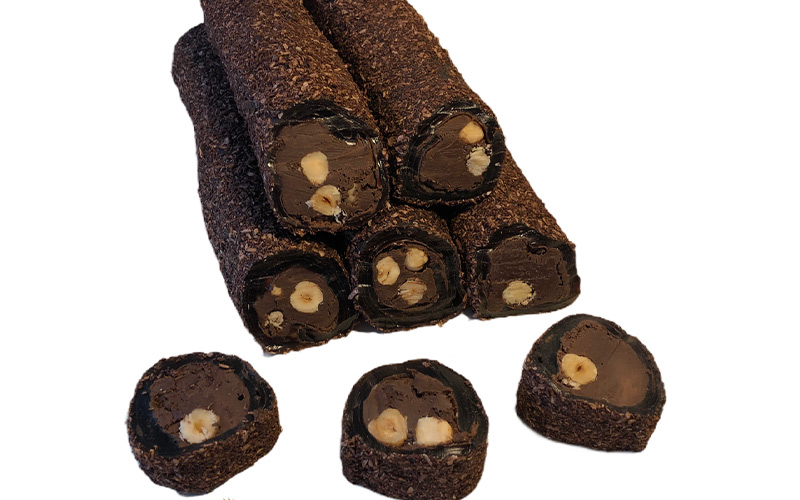
- Mixed fruit:
This variety includes a mix of flavors like lemon, orange, and cherry, creating a sweet and fruity taste.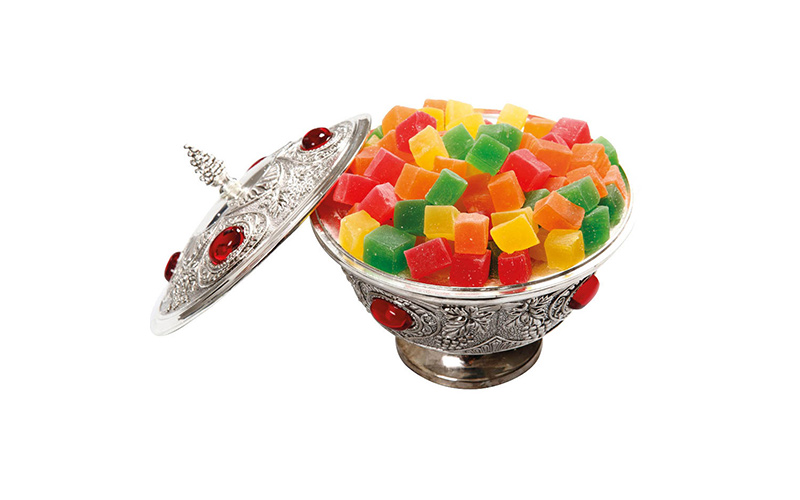
- Spicy:
Some Turkish delight makers add spices like cinnamon or chili pepper for a unique and spicy flavor.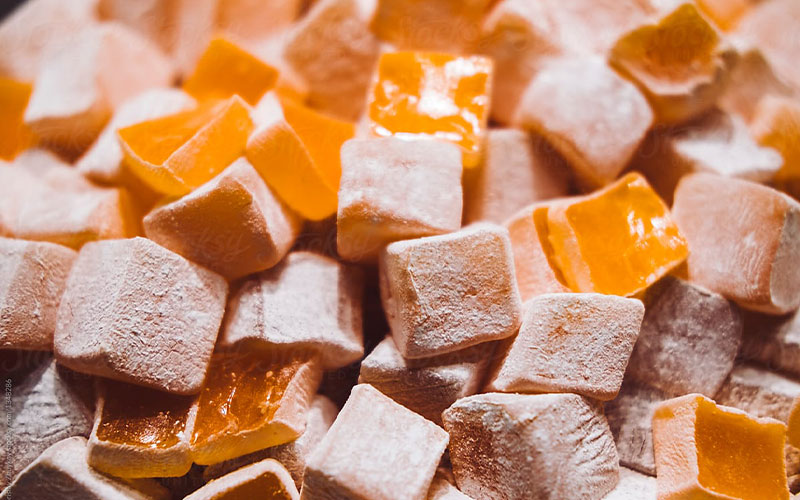
Turkish Delight as a Symbol of Turkish Culture
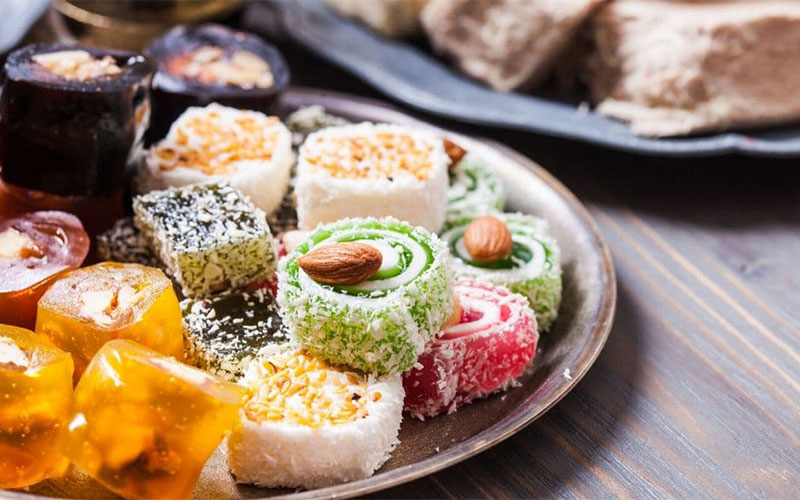
Turkish delight is not just a candy but a symbol of Turkish culture. It has been an integral part of Turkish culture for centuries, with a rich history and cultural significance.
Turkish delight is served as a sign of hospitality to guests in Turkey. It is a sweet gesture to offer guests a small plate of Turkish delight along with a cup of tea or coffee.
Turkish delight is also commonly given as a gift during special occasions such as weddings, festivals, or holidays. It is also a popular souvenir for tourists as a reminder of their travels.
Turkish delight has also played a significant role in Turkish literature, art, and music.
Turkish delight has been portrayed in paintings and other art forms, reflecting its importance in Turkish culture. It has also been mentioned in poems and stories and has become an integral part of Turkish identity.
One of the most famous poems about Turkish delight is by the Turkish poet Rumi. He wrote: "Your sweetness is my soul; your fragrant smell is my robe. I am your slave, O Turkish delight!" This poem highlights Turkish people's deep love and affection for their beloved candy.
In conclusion, Turkish delight is more than just candy; it symbolizes Turkish hospitality, culture, and tradition that has endured through the centuries. Its popularity has spread beyond Turkey, becoming an iconic country symbol. Whether enjoyed as a sweet treat or given as a gift, Turkish delight is a delicious reminder of Turkey's rich history and culture.
Comment
Leave a Comment